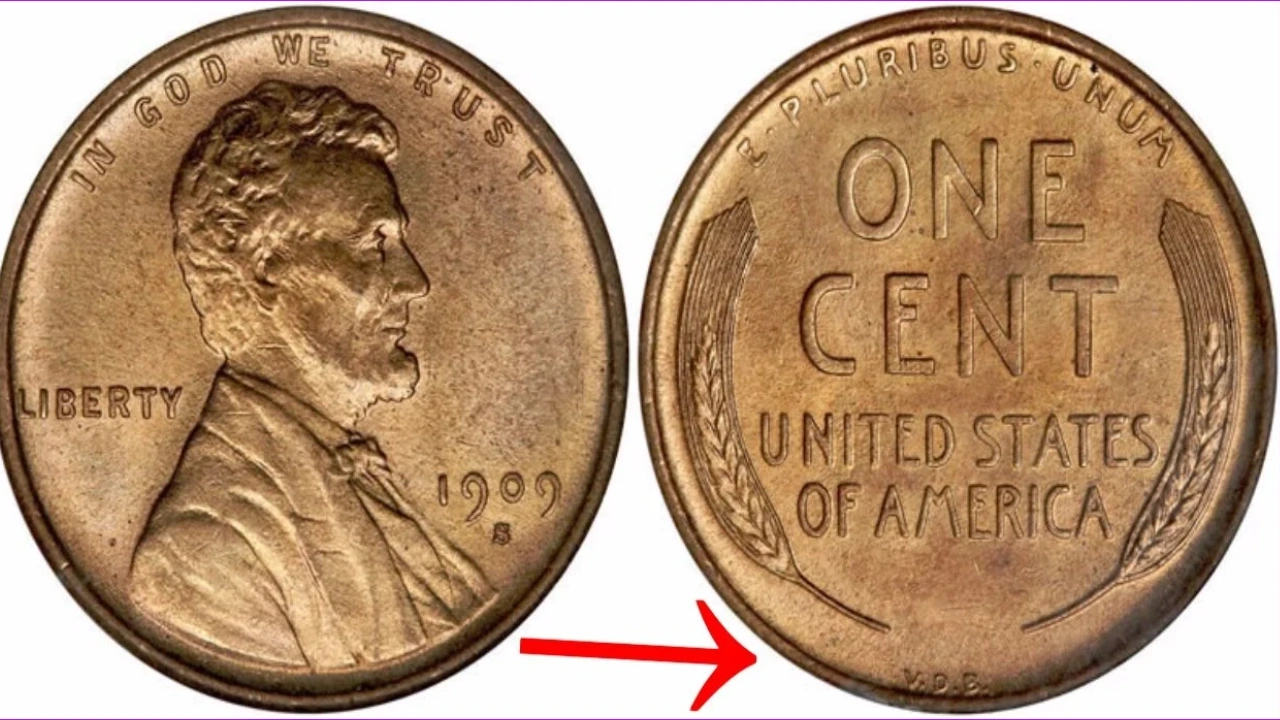Imagine this: digging through a dusty jar of pennies and finding a single coin worth more than a luxury mansion. Sounds like a daydream? For one incredibly lucky individual, it became reality with the legendary 1909-S VDB Lincoln cent – a coin that recently shattered records, fetching a staggering $2.4 million at auction. But this isn’t just ancient history; the hunt for life-changing pocket change is hotter than ever in 2025, and your penny jar might hold the next hidden gem.
Forget Bitcoin: Real Treasure is Made of Copper (and Sometimes Steel!)
While crypto markets fluctuate wildly, the tangible value of rare coins, particularly specific Lincoln pennies, has shown remarkable resilience and explosive growth. Driven by passionate collectors, historical significance, and extreme scarcity, certain pennies aren’t just currency; they’re miniature masterpieces commanding astronomical sums. The key? Knowing which tiny details turn common cents into numismatic gold.
The Crown Jewel: The 1909-S VDB – A $2.4 Million Masterpiece
The undisputed king remains the 1909-S VDB. Its story is etched in collecting lore:
-
Controversial Debut: Victor David Brenner’s prominent initials (V.D.B.) on the reverse caused an uproar, deemed too bold by the public and officials.
-
Instant Rarity: Removed within days of release, only 484,000 were struck at the San Francisco (S) mint before the initials were removed – making it the lowest-mintage regular-issue Lincoln cent ever.
-
Condition is Everything: Finding one is near-miraculous; finding one in pristine, “Full Red” condition is akin to winning the lottery. The record $2.4 million paid in early 2025 was for a coin graded near-perfect (PCGS MS67+ RD), proving its enduring status as the ultimate penny prize.
Beyond the VDB: Other Penny Powerhouses Worth Half a Million+
The 1909-S VDB isn’t alone in the stratosphere. Keep an eye peeled for these elite pennies, all confirmed to have traded hands for well over $500,000 in top grades recently:
-
The 1914-D Lincoln Cent: Produced in Denver during a year of relatively low cent output, survivors in high grades are phenomenally rare. A top-tier specimen (MS66 Red) crossed the $600,000 mark in a 2024 Heritage auction, setting a new benchmark for this key date.
-
The 1922 “No D” Lincoln Cent: A fascinating minting error. Due to a heavily worn or clogged die, the Denver “D” mintmark is completely missing from some 1922 pennies. Genuine examples (avoiding clever fakes is crucial!) in superb condition are incredibly scarce treasures, easily reaching into the $700,000+ realm for gems.
-
The 1943 Copper Lincoln Cent (The “King of Errors”): While millions of 1943 cents were struck on zinc-coated steel to save copper for WWII, a tiny number were accidentally struck on leftover copper planchets. Genuine examples are the holy grail of errors. Authentication is paramount due to sophisticated fakes, but a confirmed example in top condition? Think millions – significantly exceeding the half-million mark with ease.
Could a Modern Penny Be Your Ticket? The 1992-D “Close AM” Surprise
Proving you don’t need a century-old coin, the 1992-D Lincoln Cent with the “Close AM” variety has become a modern superstar. Here, the letters “A” and “M” in “AMERICA” on the reverse touch or nearly touch, unlike the standard design. Once overlooked, high-grade examples (MS67 Red and above) have skyrocketed in value, with record sales now flirting with the $20,000 mark – a fortune for a 30-year-old penny! It underscores the importance of scrutinizing every coin.
Why Are These Pennies Worth So Much? The Trifecta of Value
-
Extreme Rarity: Low original mintages or survival rates (especially for early coins in high grades).
-
Exceptional Condition (Grade): Coins preserved virtually flawlessly for decades are vanishingly scarce. Professional grading (PCGS, NGC) is essential.
-
Fierce Demand: Iconic status, historical significance, and their position as “key dates” in the Lincoln cent series drive intense collector competition.
Your 2025 Penny Fortune Action Plan
-
Look Closely: Don’t just dump change. Examine pennies, especially older ones (pre-1960), wheat backs (1909-1958), and specific modern dates like 1992-D. A magnifying glass helps!
-
Learn the Key Varieties: Know the critical dates and errors (1909-S VDB, 1914-D, 1922 No D, 1943 Copper, 1992-D Close AM).
-
Condition is Paramount: A heavily worn rare date won’t be a fortune. Look for sharp details, minimal marks, and original luster (reddish color for copper).
-
Get Expert Validation: Suspect you have a winner? Do NOT clean it! Consult reputable coin dealers or submit to professional grading services (PCGS or NGC) for authentication and grading. Avoid random “we buy coins” shops or unverified eBay “experts.”
The Final Takeaway: Hope in the Humble Penny
The story of the $2.4 million 1909-S VDB penny isn’t just history; it’s a powerful reminder that extraordinary value can lurk in the most ordinary places. As coin collecting evolves with digital verification tools and a new generation of enthusiasts in 2025, the thrill of the hunt remains. Armed with knowledge about these specific rarities, your next penny roll or inherited coin jar could hold not just copper, but a genuine life-changing fortune. Start looking – your treasure trove might be hiding in plain sight!
Also Read: Found in Pocket Change: A Rare Buffalo Nickel Worth $600,000!
Hi, I’m Ehsaan Mukherjee – the mind behind slategray-tarsier-598917.hostingersite.com. I’ve always been fascinated by the power of technology and the thrill of automobiles. This platform is my personal space where I explore, write, and share everything that excites me in these two dynamic worlds.
Whether it’s breaking down the latest car models or diving into the world of innovative gadgets, I believe in keeping things simple, practical, and useful. slategray-tarsier-598917.hostingersite.com is more than just a website — it’s my way of connecting with curious minds like yours.
